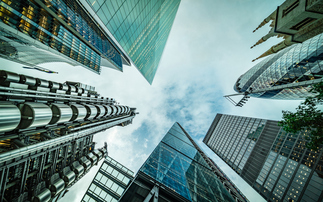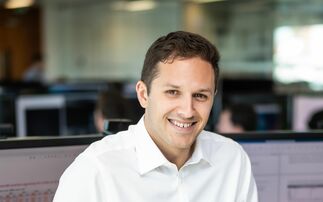In the latest in our Green Business 2022 Sustainable Ventures' reveals his hopes for a green economy ready to break down the barriers between its constituent parts
I first encountered the "green economy" as a strategy consultant at Bain's early stage technology incubation arm, Bainlab, back in 2000. What back then was a field (if you could even call it that) predominantly focused on large scale energy generation technologies i.e. wind turbines, has flourished into a multi-faceted, dynamic driving force in our economy, with low carbon innovations now appearing in every sector. As managing director of Sustainable Ventures, I've had the real privilege of seeing some of these opportunities, first emerging on the horizon, transition into fully fledged markets in their own right, and crucially, unlocking multiple social and economic benefits along the way.
Going forward, the pace of decarbonisation and its impact is only likely to increase as more consumers, businesses and governments are swayed by the green economy's inherent resource efficiency and underlying, long-term economic rationale. Energy UK's shift in position last month is one example. Indeed, the "green economy" will cease to be a distinction, as resource efficient business becomes the norm. Policy will certainly have a role to play in enabling society to tackle some of its biggest environmental challenges, but as an entrepreneur, for me the real excitement lies with the commercial innovations opening up across the economy, where real bottom-up change is reshaping the society which we live in. Here I'd like to focus on three of these trends, with a nod to some of the companies I've worked with along the way:
Connected Energy - A Green Internet of Things (IoT): From smart home appliances to the emerging connected cars sector, the IoT is not only very much now shaping the innovation trajectory, but is also opening up various new opportunities for low carbon innovation, especially around smarter asset utilisation.
Businesses such as Green Running, who specialise in energy monitoring, use artificial intelligence to capture data on buildings' energy performance - a million times every second. With this Green Running can disaggregate a property's energy bill down to individual appliances, allowing customers to see exactly which devices are working efficiently. Crucially, it's not just the ability to capture this data that makes Green Running, and many other IoT innovations valuable, but their ability to then derive accurate, reliable, and meaningful insights from the data, with which customers can make better decisions; saving money on their energy bills, finding more energy efficient appliances and reducing their carbon footprint. If the last six years have demonstrated our ability to generate data of unprecedented volumes, over the next six I see us being able to extract increasing value from the data to make a real tangible difference to consumers.
Moving forward these capabilities will continue to infiltrate new domains, unlocking greater resource efficiencies. Last month the Ellen Macarthur Foundation's report Intelligent Assets: Unlocking the circular economy potential detailed the surge in connected devices (~ up to 50 billion globally by 2020), or the so-called 'fourth industrial revolution'. Enhanced connectivity can shift usage patterns to where value creation is increasingly decoupled from finite resource consumption. From improved asset choice to optimised utilisation levels, ventures such as AutoTrip, (experts in automated business mileage expensing), are unlocking a whole range of efficiencies, showing that green business can be synonymous with cost-efficient business. Moving forward I anticipate this type of application, especially asset optimisation, will become increasingly prevalent, as misperceptions of 'green business' equating to expensive PR are fully rejected.
Interface Opportunities - Completing the Green Jigsaw: With the increasing prevalence of resource efficient applications, comes the shift from single technology solutions to a more holistic, integrated, and multi-measure approach, where enabling infrastructure and complimentary technologies are rolled out simultaneously. Here, I was particularly proud to launch E-Car Club's scheme in Stornoway late last year. Delivered in conjunction with Zero Carbon Marine Ltd, the electric vehicles source power from six new 3MW wind turbines, demonstrating that the island's abundant natural resources are not only capable of generating clean energy for islanders, but can also provide them with low cost, low carbon transport. The launch in the Hebrides was something of a milestone for green mobility, but with more and more low carbon solutions hitting the market, these joined up collaborations will become increasingly mainstream.
And such joined up thinking isn't purely a case of multiple technologies coming together, but is often evidence of disruptive business model innovation, opening up new value propositions by re-interpreting customer value. Within the transport sector, companies such as Uber and Europcar are at the forefront of a shift in consumer perspective from vehicle ownership to transport services. Over the next 6 years then the technology will be in place to allow individuals to seamlessly select the lowest cost, lowest carbon option for making a journey - in the same way that Amazon has changed the way we shop.
Local Energy wins out - Rise of Decentralised Power: The latest figures show the UK has installed around one million residential solar PV systems in the last six years. In the next six, the relentless downward pressure on component and finance costs will result in grid parity being reached across most of Europe. The result will see millions more PV systems being deployed throughout the next decade. With demand management appearing to be one of the few low carbon sectors the current UK government seems to have any appetite for, I'm particularly hopeful we will see some real development around demand response and energy storage; which are the last remaining components in sustainable, localised energy.
By 2022 I'm confident that we'll have realised Powervault's vision with domestic energy storage devices becoming as ubiquitous as washing machines and joining smart thermostats as true retail consumer goods. As a result, the sector will become far more robust - as growth is shaped by millions of individual consumer decisions rather than the central policy whims or the big bets on 50 year infrastructure projects.
In the 16years since I started at Bain, the green economy has made great progress, against considerable odds in many cases. The growing number of new opportunities means the ranks of experienced individual and corporate innovators will continue to grow. By 2022 I hope we'll have made that entrepreneurial lever long enough to [help] save the Earth.
Andrew Wordsworth is managing director at Sustainable Venture Development Partners








